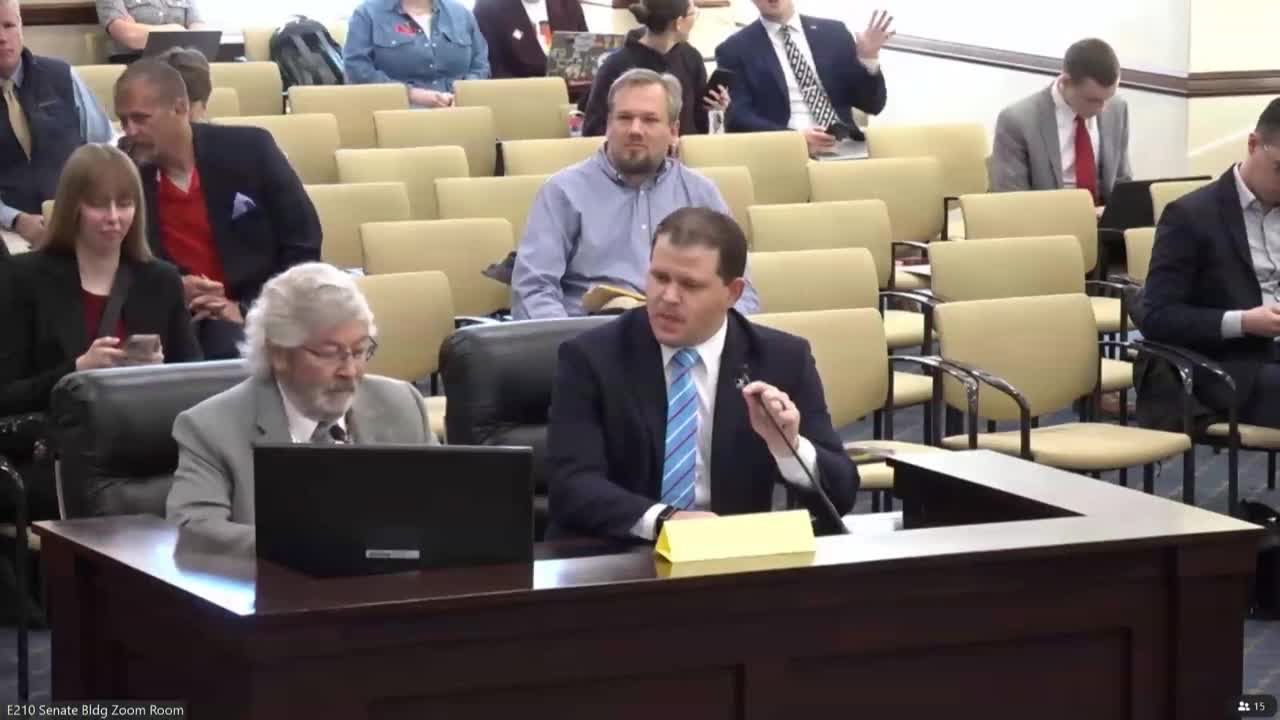Utah legislature proposes new funding formula for rural school districts
February 28, 2025 | 2025 Utah Legislature, Utah Legislature, Utah Legislative Branch, Utah
This article was created by AI summarizing key points discussed. AI makes mistakes, so for full details and context, please refer to the video of the full meeting. Please report any errors so we can fix them. Report an error »

In a significant move for rural education, the Senate Education Committee discussed a new bill aimed at reforming the funding formula for rural school districts during their meeting on February 28, 2025. This bill, which has been in development for two years, has garnered broad support from rural superintendents, school boards, and business administrators, as well as the state’s Board of Education.
The current funding formula, known as the NESTS formula, has faced criticism for its vague and subjective qualifications, leading to inconsistencies and unintended consequences for rural schools. For instance, one county that consolidated two schools lost $500,000 in funding, highlighting the formula's flaws. Additionally, schools have been incentivized to make decisions based on funding rather than educational needs, such as moving fifth graders to junior high to secure more financial support.
The proposed bill aims to clarify the qualifications for funding and address the unique challenges faced by rural schools, such as lower property tax assessments and limited staff. It introduces two funding methods based on school district population, allowing for a more equitable distribution of resources that considers economies of scale and proximity to population centers.
Importantly, the bill shifts the responsibility for rural school funding back to the legislature, moving away from reliance on one-time funding sources. This change is crucial for rural Utah, where consistent funding is essential for maintaining school operations. As rural schools often face distinct challenges compared to their urban counterparts, this reform is seen as a necessary step toward ensuring that all students have access to quality education.
The committee's discussions reflect a growing recognition of the need to support rural education effectively, and the proposed changes could lead to a more sustainable and fair funding model for these communities. As the bill progresses, it will be vital for stakeholders to continue advocating for the needs of rural schools to ensure that they receive the resources necessary for success.
The current funding formula, known as the NESTS formula, has faced criticism for its vague and subjective qualifications, leading to inconsistencies and unintended consequences for rural schools. For instance, one county that consolidated two schools lost $500,000 in funding, highlighting the formula's flaws. Additionally, schools have been incentivized to make decisions based on funding rather than educational needs, such as moving fifth graders to junior high to secure more financial support.
The proposed bill aims to clarify the qualifications for funding and address the unique challenges faced by rural schools, such as lower property tax assessments and limited staff. It introduces two funding methods based on school district population, allowing for a more equitable distribution of resources that considers economies of scale and proximity to population centers.
Importantly, the bill shifts the responsibility for rural school funding back to the legislature, moving away from reliance on one-time funding sources. This change is crucial for rural Utah, where consistent funding is essential for maintaining school operations. As rural schools often face distinct challenges compared to their urban counterparts, this reform is seen as a necessary step toward ensuring that all students have access to quality education.
The committee's discussions reflect a growing recognition of the need to support rural education effectively, and the proposed changes could lead to a more sustainable and fair funding model for these communities. As the bill progresses, it will be vital for stakeholders to continue advocating for the needs of rural schools to ensure that they receive the resources necessary for success.
View full meeting
This article is based on a recent meeting—watch the full video and explore the complete transcript for deeper insights into the discussion.
View full meeting

